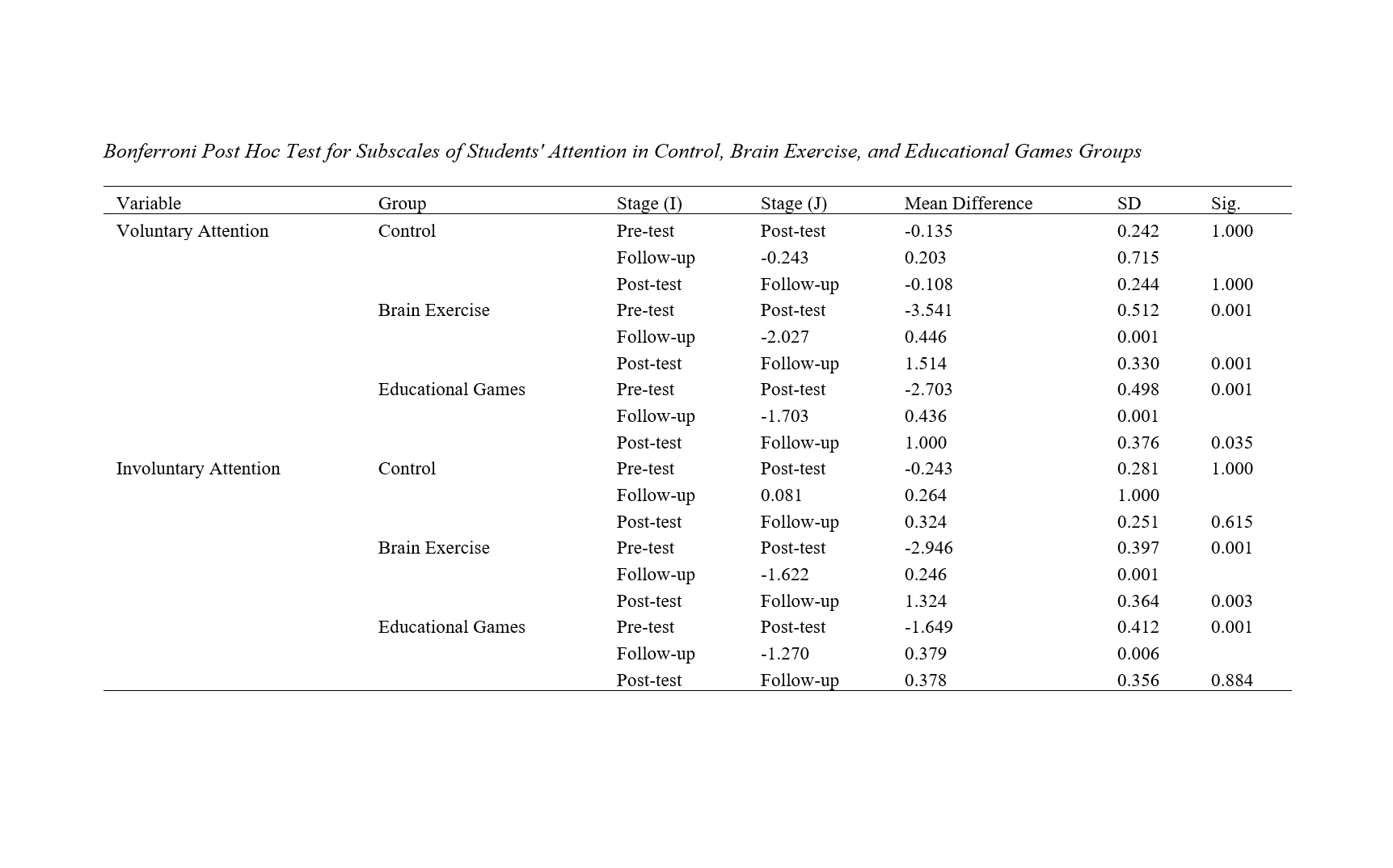Comparing the Effectiveness of Brain Gym and Educational Games on Improving Students' Concentration: A Follow-Up Study
Keywords:
Brain Gym, Educational Games, Concentration, StudentsAbstract
Objective: The present study aimed to compare the effectiveness of brain Gym and educational games on improving the attention of 8-10-year-old students through a two-month follow-up study.
Methods and Materials: The present study is experimental research with a pretest-posttest-follow-up design, including a control group and two experimental groups. The research population comprised all 8-10-year-old female students in Ahvaz during the 2022-2023 academic year. From this population, 114 individuals were selected as the research sample. However, three participants were excluded from the study due to irregular attendance in educational sessions. The study included three groups: control, brain Gym , and educational games. The brain Gym group underwent 20 sessions, each lasting 20 minutes twice a week, with each exercise lasting between 30 to 40 seconds for children (Brown, 2012). Additionally, the educational games group participated in activities twice a week for 8 weeks, with each session lasting between 30 to 45 minutes. The games included: 1) Handclap, 2) Picture completion, 3) Role-playing, 4) Drawing with closed eyes, 5) Thankfulness, 6) Two wrists, one wrist, 7) Clay modeling, 8) Finding geometric shapes (Jafari, 2014). Participants in the control group did not receive any intervention. The Souri and Ourki Attention Questionnaire (2014) was used to assess attention in three stages (before, after intervention, and two-month follow-up).
Findings: The results of the Bonferroni follow-up test indicated no significant difference between the effects of brain Gym and educational games on improving the attention of 8-10-year-old students (p>0.05). However, there was a significant difference between the post-test scores of each group compared to the pretest stage (p<0.01).
Conclusion: Overall, the results of the present study suggest that both brain Gym and educational games can be beneficial methods for improving both voluntary and involuntary attention in elementary school students.
Downloads

Downloads
Additional Files
Published
Issue
Section
License

This work is licensed under a Creative Commons Attribution-NonCommercial 4.0 International License.








